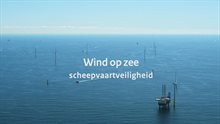Shipping safety around offshore wind farms (MOSWOZ)
The North Sea is one of the busiest areas for shipping in the world. In addition to shipping, we use the North Sea for many other purposes. One of these is the generation of energy. It is our ambition to produce more offshore wind energy in coming decades, so that we can meet the climate targets. That will have an impact on shipping safety. For that reason, Rijkswaterstaat is studying that field so that measures can be taken to maintain levels of shipping safety. Rijkswaterstaat has also set up the Offshore Wind Energy Shipping Safety Monitoring and Research Programme (MOSWOZ). In the context of this programme we will be investigating the effect of offshore wind farms on shipping safety.
MOSWOZ-related topics
MOSWOZ is looking to find answers to a range of research questions that can be grouped together under a number of topics. This means asking questions such as: Are the predicted hazards really manifesting themselves and are they doing so as expected? Have any unexpected developments presented themselves? And how effective and efficient are the measures that are being used for shipping safety? We are thus able to support and advise policy makers and other interested parties.
More information

Our newsletter (in Dutch), is published once per quarter. Would you like to receive a copy? Then please register by clicking here.
Hydro/Meteo
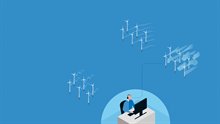
Analyse whether there are any hydrodynamic or meteorological effects that are relevant to shipping safety in the vicinity of wind farms.
Collisions
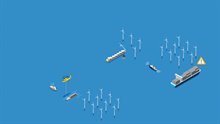
Analyse what the possible scenarios are if a vessel sails or drifts into a wind turbine.
ERTV
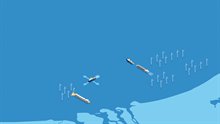
Explore the options for using more than one Emergency Response Towing Vessel (ERTVs)- the effectiveness and working method.
Through shipping
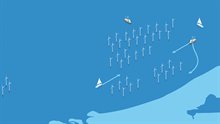
Identify the threats to shipping passing through, rather than sailing around, wind farms.
VTMon
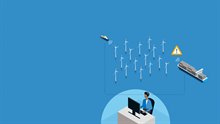
Configure a form of vessel traffic monitoring together with the Coast Guard.
Monitoring
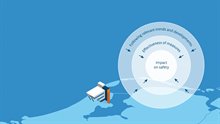
Track how vessel traffic and threats to shipping safety change as a result of the creation of wind farms.
Anchorage areas
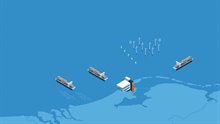
Investigate whether and, if so, how better usage of anchorage areas could help improve shipping safety.
Crisis organisation
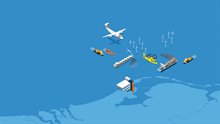
Investigate the impact on crisis organisation (in relation to complexity).
Foreign benchmarking
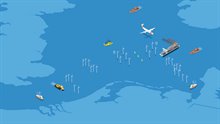
Exchange of knowledge and insights with our neighbours on policy and managerial matters relating to shipping safety in and around offshore wind farms.
Measures to maintain and improve shipping safety
The North Sea may indeed be one of the most intensively used bodies of open water, but the authorities' starting point remains that we must maintain safety levels at sea and improve them where possible. The Netherlands' part of this body of water will see the addition of around 1,500 wind turbines in the period up to and including 2032; the Additional Roadmap for Offshore Wind Energy 2030 gives an outline of the plans. Research carried out by the Maritime Research Institute Netherlands (MARIN) reveals that the risk of collisions between seagoing vessels and wind turbines rises significantly with the arrival of new wind farms. So extra measures are required: preventative measures to avoid incidents, such as extra sensors in wind farms, extra monitoring and enforcement and, in addition, measures in the event of an incident, for example the mobilisation of extra emergency response tugboat capacity. MOSWOZ, too, is one of the measures as it leads to clearer insights and a more efficient deployment of all resources.
Insight into threats and effectiveness of measures
We do not yet know enough about the threats and the effectiveness of the measures. So MOSWOZ is an attempt to gain greater insight, which will enable us to take more appropriate action to preserve the safety level. In each case, the aim is to act quickly in response to new developments and innovations. A recent study into the threat to shipping of collisions with wind turbines, for instance, led to developments aimed at reducing the level of risk. Extra Emergency Response Towing Vessels (ERTV) are ready and waiting, while extra personnel are being deployed at Coast Guard stations to actively monitor seagoing vessels in the vicinity of wind farms and to put a call out to them where necessary.
